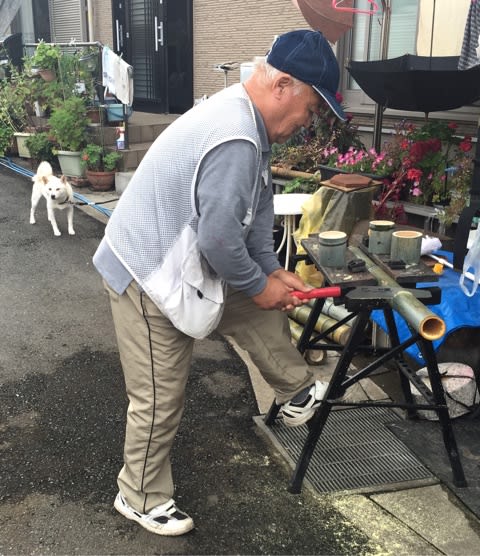
▼老眼なので文庫本はつらいものがあるけれど、文春文庫『昭和が明るかった頃』(関川夏央著)は自分の振り返りを含めて、とても楽しく、一面では物悲しく読み通せました。日活の栄枯盛衰と石原裕次郎、赤木圭一郎、小林旭、吉永小百合などの映画人生を通して、昭和という時代を再認識することができました。
▼ところで、高度成長時代のスクリーンには、モウモウと、まとわりつくように、たばこの煙が必ずといってよいほどセットされていました。平成になってから、映画はもちろんテレビの画面からも、喫煙シーンは姿を消しつつあります。時代の変化は、さかのぼって対比することにより、具体的に理解が深まりますね。
I have presbyopia, so paperbacks can be hard for me.
In this situation, I was able to read through Bunshun Bunko's When the Showa Era was Bright, by Natsuo Sekikawa, including my own reflections, with great pleasure and, on one level, with sadness.
Through the rise and fall of Nikkatsu and the film lives of Yujiro Ishihara, Keiichiro Akagi, Asahi Kobayashi, Sayuri Yoshinaga and others, I was able to rediscover the Showa era.
By the way, during the high-growth era, cigarette smoke was always on the screen, as if it were clinging to the screen.
Since the Heisei era, smoking scenes have been disappearing from film and television screens.
The changes of the times can be better understood in concrete terms by going back and contrasting the tobacco🚬, a luxury item.
 ▼懐かし過ぎる駄菓子です。相鉄線の二俣川駅改札口を出ると「二木の菓子」があり、立ち寄ってきました。
▼懐かし過ぎる駄菓子です。相鉄線の二俣川駅改札口を出ると「二木の菓子」があり、立ち寄ってきました。 ▼お菓子だけでなく、おつまみも格安です。それにしても、堂々のシガレット菓子、なんか時代を感じますね。
▼お菓子だけでなく、おつまみも格安です。それにしても、堂々のシガレット菓子、なんか時代を感じますね。
 私は上野公園を訪れたら、できるだけ西郷さんの銅像に立ち寄るようにしています。詩吟のイベントでも、西郷さんの漢詩が好きで、たびたび吟詠してきました。改めて、『南洲残影』江藤淳著(文藝春秋刊行、1998年)を読み、西南の役で鹿児島に敗走する場面を読み、心打たれました。
私は上野公園を訪れたら、できるだけ西郷さんの銅像に立ち寄るようにしています。詩吟のイベントでも、西郷さんの漢詩が好きで、たびたび吟詠してきました。改めて、『南洲残影』江藤淳著(文藝春秋刊行、1998年)を読み、西南の役で鹿児島に敗走する場面を読み、心打たれました。 ▼民放各局で、私が一番見るのはいつの間にかテレビ東京になっています。必ず見ている番組が多くなり、帰宅が遅いときには、カミさんも心得ていて録画しておいてくれます。
▼民放各局で、私が一番見るのはいつの間にかテレビ東京になっています。必ず見ている番組が多くなり、帰宅が遅いときには、カミさんも心得ていて録画しておいてくれます。 ▼先日、車検の見積と予約をしに、近所のオートバックスに行きました。待ち時間に店内を見て回り、車に関連する部品、付属品、アクセサリー、清掃グッズなと、あふれんばかりの品々に驚かされました。
▼先日、車検の見積と予約をしに、近所のオートバックスに行きました。待ち時間に店内を見て回り、車に関連する部品、付属品、アクセサリー、清掃グッズなと、あふれんばかりの品々に驚かされました。 ▼喫煙できるスペースとしては、ガラス張りの店内の喫煙室、それのほか2か所にスタンド灰皿が置かれていました。
▼喫煙できるスペースとしては、ガラス張りの店内の喫煙室、それのほか2か所にスタンド灰皿が置かれていました。 ▼ここ2~3年、医師たちがスタジオに並び、芸能人たちに診断を下すテレビ番組が定期的に放送され、とくにヘビースモーカーで名を馳せているタレントが、次々と禁煙を宣言させられています。
▼ここ2~3年、医師たちがスタジオに並び、芸能人たちに診断を下すテレビ番組が定期的に放送され、とくにヘビースモーカーで名を馳せているタレントが、次々と禁煙を宣言させられています。 ▼老眼なので文庫本はつらいものがあるけれど、文春文庫『昭和が明るかった頃』(関川夏央著)は自分の振り返りを含めて、とても楽しく、一面では物悲しく読み通せました。日活の栄枯盛衰と石原裕次郎、赤木圭一郎、小林旭、吉永小百合などの映画人生を通して、昭和という時代を再認識することができました。
▼老眼なので文庫本はつらいものがあるけれど、文春文庫『昭和が明るかった頃』(関川夏央著)は自分の振り返りを含めて、とても楽しく、一面では物悲しく読み通せました。日活の栄枯盛衰と石原裕次郎、赤木圭一郎、小林旭、吉永小百合などの映画人生を通して、昭和という時代を再認識することができました。 ▼10月20日のランチは、「やまや浜松町店」で焼き魚(銚子産の塩さば)を食べました。お値段は1000円なのですが、辛子明太子と高菜漬け、ご飯が食べ放題なので、ものすごくお得感があり、その美味しさに感動ものなのです。
▼10月20日のランチは、「やまや浜松町店」で焼き魚(銚子産の塩さば)を食べました。お値段は1000円なのですが、辛子明太子と高菜漬け、ご飯が食べ放題なので、ものすごくお得感があり、その美味しさに感動ものなのです。 ▼レジに辛子明太子マヨネーズが販売されていたので、思わず買ってしまいました。食パンやジャガイモに、とっても合うそうなので今晩やってみます。浜松町で食後の散歩は、一服がてら紅葉間近の芝離宮恩賜庭園、秋晴れで清々しい火曜日の昼でした。
▼レジに辛子明太子マヨネーズが販売されていたので、思わず買ってしまいました。食パンやジャガイモに、とっても合うそうなので今晩やってみます。浜松町で食後の散歩は、一服がてら紅葉間近の芝離宮恩賜庭園、秋晴れで清々しい火曜日の昼でした。 ▼10月15日は、3回目の年金支給日でした。翌々日の午後、相鉄線「南万騎が原駅」で下車し、坂道を上り下りして、初めて二俣川駅を目ざし歩きました。
▼10月15日は、3回目の年金支給日でした。翌々日の午後、相鉄線「南万騎が原駅」で下車し、坂道を上り下りして、初めて二俣川駅を目ざし歩きました。 ▼途中、竹細工に精を出すおじいちゃんが目にとまり、私はたまらず話しかけていました。人間が変わってしまったかのようです。これは、明らかに横浜への引越し効果だ、と思います。
▼途中、竹細工に精を出すおじいちゃんが目にとまり、私はたまらず話しかけていました。人間が変わってしまったかのようです。これは、明らかに横浜への引越し効果だ、と思います。 ▼竹をノコギリで切り、二つ一組、それぞれ手引き用のヒモをつけ、足を乗っけてパカパカと歩いて遊ぶ道具をつくり、来月の小学校のイベントで使うんだ、とおっしゃてました。竹とんぼは、時間がかかるわりに、今の子どもは飛ばし方もわかんねぇから、これにしてんの、とのことでした。
▼竹をノコギリで切り、二つ一組、それぞれ手引き用のヒモをつけ、足を乗っけてパカパカと歩いて遊ぶ道具をつくり、来月の小学校のイベントで使うんだ、とおっしゃてました。竹とんぼは、時間がかかるわりに、今の子どもは飛ばし方もわかんねぇから、これにしてんの、とのことでした。 ▼だんだん、話がのってきたらしくと、こんなものも作ってると、生け花用の花入れまでお見せいただきました。おじいちゃんの後ろには、相棒のわんちゃんが私に警戒の目を向けていましたが、そのうち仲間だと思ってくれたようです。
▼だんだん、話がのってきたらしくと、こんなものも作ってると、生け花用の花入れまでお見せいただきました。おじいちゃんの後ろには、相棒のわんちゃんが私に警戒の目を向けていましたが、そのうち仲間だと思ってくれたようです。
 ▼10月14日のランチは、玄米のおにぎりと学食メニューでした。ラーメンは高カロリーなので、絶対に食べ過ぎだと思いながら、とても美味しくいただきました。
▼10月14日のランチは、玄米のおにぎりと学食メニューでした。ラーメンは高カロリーなので、絶対に食べ過ぎだと思いながら、とても美味しくいただきました。 ▼10月14日の朝、港区福祉会館前の交差点で、美化活動のボランティアに参加し、たばこの吸い殻などのポイ捨て防止を啓発する「ポケットティッシュ」を配布していたら、私を呼ぶ声がして、「先生頑張って~っ!」と自転車で通り過ぎるご婦人が目に入りました。
▼10月14日の朝、港区福祉会館前の交差点で、美化活動のボランティアに参加し、たばこの吸い殻などのポイ捨て防止を啓発する「ポケットティッシュ」を配布していたら、私を呼ぶ声がして、「先生頑張って~っ!」と自転車で通り過ぎるご婦人が目に入りました。